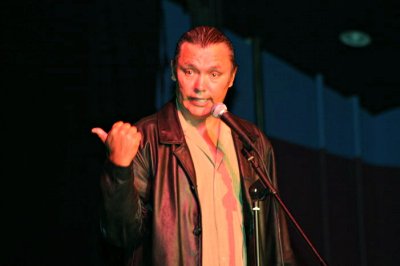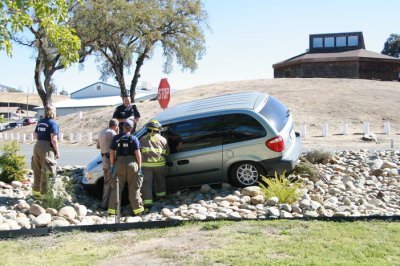- Elizabeth Larson
- Posted On
The Barbara LaForge murder: A woman of heart, courage
LAKE COUNTY – On a wall in the Jacksonville, Fla., home of Christine Jones hangs a pencil drawing of a covered bridge and a Model A, done by her adopted daughter, Barbara LaForge. {sidebar id=14}
It was in Jones' home, amongst her four biological children, that Barbara LaForge would find an emotional and spiritual anchor for a life that, had the Jones family not come along, could easily have gone astray.
Barbara LaForge, born in 1959, and Lisa Jones met in the sixth grade in Jacksonville, Fla., where both girls had been raised.
Not long before, Barbara LaForge's mother, Donna LaForge, had taken her two younger daughters and abandoned Barbara, the eldest of four children, and her brother Jack, according to Jones, who now goes by her married name, Lisa Hatcher.
Barbara and Jack's father, Jack LaForge, retired out of the military to take care of his children, said Hatcher. But Jack LaForge was a troubled man, and he committed suicide, an act his daughter Barbara witnessed. Hatcher believes Barbara was 11 when the suicide took place.
The two LaForge children were taken in by a cousin, a single woman who was their father's only surviving relative. Nearby lived Hatcher, her two sisters and brother, and their parents, Christine and Gerald Jones.
The LaForge children became friends with the Joneses, said Hatcher, and soon they were over at the family's home on an almost constant basis, attracted by the large and warm family.
The Jones family offered to take in Barbara and Jack, and at one time had legal guardianship, said Hatcher.
It was in the Jones' home, Hatcher said, that Barbara would learn about the Jehovah's Witnesses, a religion she would follow devotedly for the rest of her life.
For all intents and purposes, Barbara and Jack LaForge became part of the Jones family, said Hatcher.
While it seemed that Barbara and Jack LaForge had finally found a safe haven, it wasn't to be. Their family found out that they were being brought up as Jehovah's Witnesses, said Hatcher, and their cousin came back to take custody.
“She stepped in and she took both of those kids and moved them out of our home and promptly put them in an orphanage in Mobile, Alabama,” Hatcher said.
Hatcher's sister, Janeen Hawkins, said the family tried to stay in touch with the LaForges. Barbara LaForge, devoted to her new faith, was baptized a Jehovah's Witness at age 14 while still in the orphanage.
LaForge's cousin signed paperwork to keep the two children in the orphanage until they turned 21, said Hawkins. But Jack LaForge ran away, and when the cousin died, Barbara LaForge was left with no legal guardian. When she turned 18 that allowed her to leave the orphanage.
Hatcher said LaForge promptly returned home to Jacksonville, and to the home of Gerald and Christine Jones, her “pa” and “ma.”
GROWING UP AND MOVING WEST
LaForge enrolled in the local community college and began studying art, said Hatcher.
“She was drawing all the time,” said Hatcher.
LaForge also wrote constantly, filling journals with her observations on life, her poems and reviews of movies and concerts she attended, complete with the ticket stubs.
Christine Jones, in the mean time, helped Barbara LaForge and her brother find their mother, who was living in Southern California with Tom Gilliam, a World War II veteran she would eventually marry. Hatcher said Tom and Donna Gilliam visited the Joneses more than once in Florida, and in turn Barbara and Jack LaForge traveled to California to see them.
When she was in her 20s, Barbara LaForge decided to move west to Los Angeles to be near her biological mother, said Hawkins.
Later, LaForge moved to Seattle, where she lived for several years before moving back to California, to Lake County, where her mother and stepfather had moved.
FATHER AND DAUGHTER
In Lake County, Barbara LaForge came into the loving embrace of Tom Gilliam, her stepfather.
Tom Gilliam, born in 1919, was a decorated veteran of World War II and Korea.
He was a tough but generous fellow who raised four sons, says his son Tommy Gilliam, who lives in Lakeport.
Tom Gilliam had always wanted a daughter, said his son. When he married his second wife, Donna LaForge, he got the daughter he wanted in Barbara LaForge.
Gilliam was very generous with his stepdaughter, purchasing a trailer for LaForge in a mobile home park, said Tommy Gilliam.
It was there that LaForge met Dan Hamblin, working as a handyman at the trailer park, according to Hatcher.
Hatcher said LaForge was deeply in love with Hamblin, who she married on Oct. 20, 1996. It was his fourth marriage, her first.
“She had waited all her life to get married,” said Hatcher.
Hawkins said that LaForge was drawn to Hamblin, despite the fact they did not share the same faith. “She said it was the way he treated her, the way he looked at her."
LaForge was much more outgoing than her husband, said Hawkins. LaForge told Hawkins that Hamblin was a homebody, while LaForge herself “was always traveling,” said Hawkins.
That included taking a month-long backpacking trip in the Australian outback when a young woman, said Hawkins.
In 1997, the year following LaForge and Hamblin's marriage, Tom Gilliam purchased the Wild Wood Frame Shop from a previous owner and helped LaForge get set up in business. She originally opened the shop across the street from the gallery's current location.
Artist Gail Salituri said Tom Gilliam introduced her to LaForge. “The minute I met her, we were friends, right from the get-go,” said Salituri.
In 1997 LaForge approached Salituri about sharing space in the new location across the street, with Salituri's art gallery in the front and LaForge's frame shop in the back, which Salituri called “a perfect set up.”
The women rented the shop at 165 N. Main St. in October 1997, remodeled it and opened for business in January 1998.
“It was a very happy beginning,” said Salituri.
A FINAL VISIT EAST
Barbara LaForge hadn't seen her adopted family in Florida in many years, said sister Lisa Hatcher.
But in January 2001 her nephew was to be baptized into the Jehovah's Witnesses church. Hatcher said the family was talking about how great it would be to have LaForge come and visit.
Hatcher and LaForge talked about it, and the two concocted a plan. Telling no one else, they arranged for LaForge to come out and arrive unannounced.
Then Hatcher drove LaForge to Christine Jones' drapery shop. Hatcher said her mother fell to pieces when she saw her adopted daughter appear in person.
“It was so awesome to have everybody all together again,” said Hatcher, who said LaForge spent time with all of her adopted family.
Despite the happiness of the occasion, LaForge's life had taken another heartbreaking twist.
“While she was there, Danny had left her for another woman,” said Hatcher.
Both Hatcher and her sister, Janeen Hawkins, said Hamblin had told LaForge he was going back to his first wife, with whom he had a child. He had told LaForge that he had “unfinished business” with his first wife, because he believed he as still in love with her.
So, with that heartache, she came to Florida. But, said Hatcher, “She didn't come dragging her feet.”
Hatcher added, “While she was here, she didn't make a big deal out of it.”
Hawkins said LaForge put on a brave face, saying she wanted Hamblin to be happy, and wouldn't hold him back.
During that visit to Florida, Hatcher and Hawkins said their adopted sister made a point of bringing up the topic of her will.
In 1978, when LaForge turned 18, Hatcher said Jones took LaForge to an attorney so she could work out some inheritance issues from her late father. At the same time, LaForge asked the attorney to create a will for her.
That will, a copy of which was obtained by Lake County News, names Jones as executor. Jones and her husband, Gerald, also were left half of LaForge's estate, with the other half left to her brother, Jack. She specifically did not provide an inheritance for her mother, Donna, or sisters Leilani or Laura.
In addition, LaForge stated that, in the case of her death, she wanted to be cremated, with her ashes sprinkled over the grave of her biological father, Jack LaForge, at Oaklawn Cemetery in Jacksonville, Fla.
During the January 2001 visit to Florida, LaForge told her family that the will was still in force. “She brought it up,” said Hatcher, who added the family didn't broach the subject.
Christine Jones said she believes LaForge didn't trust Hamblin, which was why she left her original will in effect.
Meanwhile, LaForge and Hamblin remained in contact during the visit, said Hatcher. A short time after Hamblin got to his first wife's home – the sisters could not remember if it was in Washington or Oregon – he called LaForge to tell her he had made a mistake.
Hatcher said LaForge immediately sent Hamblin money to go home, and bought him a new bed because of his bad back, hurt in an accident years before.
On that same visit, Hatcher said her mother vividly remembers going to a local bookstore with LaForge, who purchased a book on guns. LaForge told her family that Hamblin was “getting into guns” and wanted her to learn how to shoot with him. Hawkins said the family wasn't thrilled with the idea.
Soon, it was time to head back to Lake County, and LaForge took leave of her adopted family in Florida.
None of them dreamed it would be the last time they saw her alive.
In part four, Barbara LaForge's family and friends document the last years of her life.
E-mail Elizabeth Larson at This email address is being protected from spambots. You need JavaScript enabled to view it..
{mos_sb_discuss:2}












